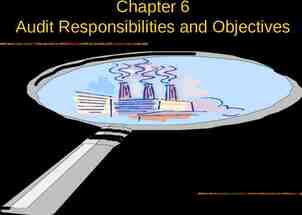Capacitive load gauge development for magnet application
14 Slides2.35 MB

Capacitive load gauge development for magnet application TE-MSC-LMF Felix Wolf supervised by Arnaud Foussat 11.03.2020

Purpose and objective Retrieve the fabrication procedure of capacitive gauges Perform gauge manufacturing process with all relevant tools and components Test of manufactured gauges with performance identification Stress determination in the coil of a magnet Design study of the capacitive gage integration in a magnet or coil assembly with respect to sensor limitations

Capacitive load gauge development for magnet application Collection of all available documentation about work on capacitive gauges at CERN Knowledge transfer with Michel Andre Parent who was involved in the manufacturing process of capacitive gauges at CERN 20 year’s ago “Sandwich” type capacitive force transducer design. [I. Vanenkov, Internal Note 96-14, 1996] Test of existing data acquisition system and LabView code for sensor read out Schematic layout of the data acquisition system. [N. Siegel et al. “LHC PROJECT REPORT 173”, 1998]

Capacitive load gauge development for magnet application Manufacturing Tools available (for 15mm x 75 mm sensors) Sensor production Validation of the produced sensors Identification of sensor limitations Documentation Characterization and manufacturing validation of CERN Capacitive load gauges technology (EDMS Nr: 2330901) Manufacturing procedure of Capacitive gauges (ongoing) Optimisation Sensitivity to manufacturing parameter Tool qualification at EN-MME Further steps to be defined

Test equipment LCR meter (Agilent 4263B) Switch system (Keithley 7001) LabView 2017

Sensor description Sensor dimensions 15 mm x 75 mm gauge are 0.3 mm gauge thickness Sensor layers Three layers of 50 µm thick stainless steel Two layers of inner polyimide film (25.4 µm) Two layers of outer polyimide film (50.8 µm) Glue with a thickness of about 1-1.5 µm per layer Central electrode Top electrode Central electrode connection Top/bottom electrode connection Soldered shield of the cables Bottom electrode Two coaxial cables Insulating shrink hose

Sensor description Increased sensitivity by the effective area without increasing the geometrical area of the gauge. Flux path C1 C2 Electrodes (stainless steel foil 50 µm) Strain gauge glue (M610 bond) LCR Meter Polyimide film 25.4-50.8 µm C1 Improved shielded capacitor as all significant flux paths are contained within the gauge. Four gauges manufactured, calibrated and tested at ambient temperature. LCR Meter LCR Meter C1 C2 Sensor G1 G2 G3 G4 Measured sensor thickness in µm 310 303.3 311.3 308.6 Measured Capacity Cm in nF 2.34 2.41 2.37 2.38 C2 Calibration factor pF/MPa 0.55 0.56 0.55 0.55

Sensor validation up to 100MPa Gauge 1 Gauge 2 Gauge 3 Gauge 4 Load cell 100 80 101 Stress in MPa accuracy about 1% to load cell precision of 2 MPa (at 100MPa) 120 Stress in MPa Four gauges stacked on top of each other in one load line Good agreement of load cell and capacitive gauge measurement 60 40 20 100 99 Gauge 1 Gauge 2 Gauge 3 Gauge 4 Load cell 98 97 96 375 400 425 450 Time in second 0 0 200 400 600 800 1000 Time in second 1200 1400 1600

Sensor validation up to 100MPa Four gauges stacked on top of each other in one load line Stability test at 100MPa for 1 hour Sensitivity test at low load levels precision of 1 MPa (at 4MPa)

Sensor validation above 100MPa Two gauges stacked on top of each other in one load line 180 Gauge 1 160 (2% at 160MPa compared to load cell) Time dependent capacity increase at constant load Gauge 2 140 Load cell 120 100 170 80 Stress in MPa Reduced precision at high load Stress in MPa 165 60 160 155 40 150 20 200 0 0 200 400 400 600 800 Time in sec 1000 600 800 Time in sec 1000 1200 1400

Sensor validation above 100MPa 100 Gauge 1 Gauge 2 90 80 Two gauges stacked on top of each other in one load line Up to 110 MPa Linear behaviour beyond the elastic limit of the polyimide film (yield point 69MPa) 70 60 50 40 30 20 10 0 Above 110 MPa Deviation from a linear capacity – stress behaviour Capacity variation at constant load (160MPa) Sensors are still intact and not delaminated. 0 20 160 40 60 80 100 120 140 160 60 80 100 120 140 160 Gauge 1 Gauge 2 140 120 100 80 60 40 20 0 0 20 40

Outlook Test at cryogenic condition Determine the mechanical limit under shear compressive load Determination of the sensor stiffness What is the ultimate shear stress, the sensor can withstand? What is the ultimate deformation in shear which sensor can withstand? What is the best material pairing to protect the sensor against shear stress (to reduce friction)? Is a shear stress reduced sensor integration possible? Can the stiffness of the sensor be adapted by using a dielectric material with higher stiffness? Study the integration of a sensor in a magnet or coil assembly

Remarks for capacitive gauge application Contra Pro Sensor is sensitive to shear stress, limited by glue and polyimide (Stress/strain level of failure?) Shear reduced integration design of the sensor in the magnet would be needed Special Design Lubricant / Teflon coating Sensor effects the assembly stiffness as it is in the load line (specially for Nb3Sn coils which have higher stiffness by a factor of 5 to NbTi coils) How to compensate 150m of polyimide per sensor? Sensor can identify an applied load above 150MPa Sensor design can be adapted to requirements Online stress monitoring possible (compared to pressure sensitive films)

Thank you for your attention.






